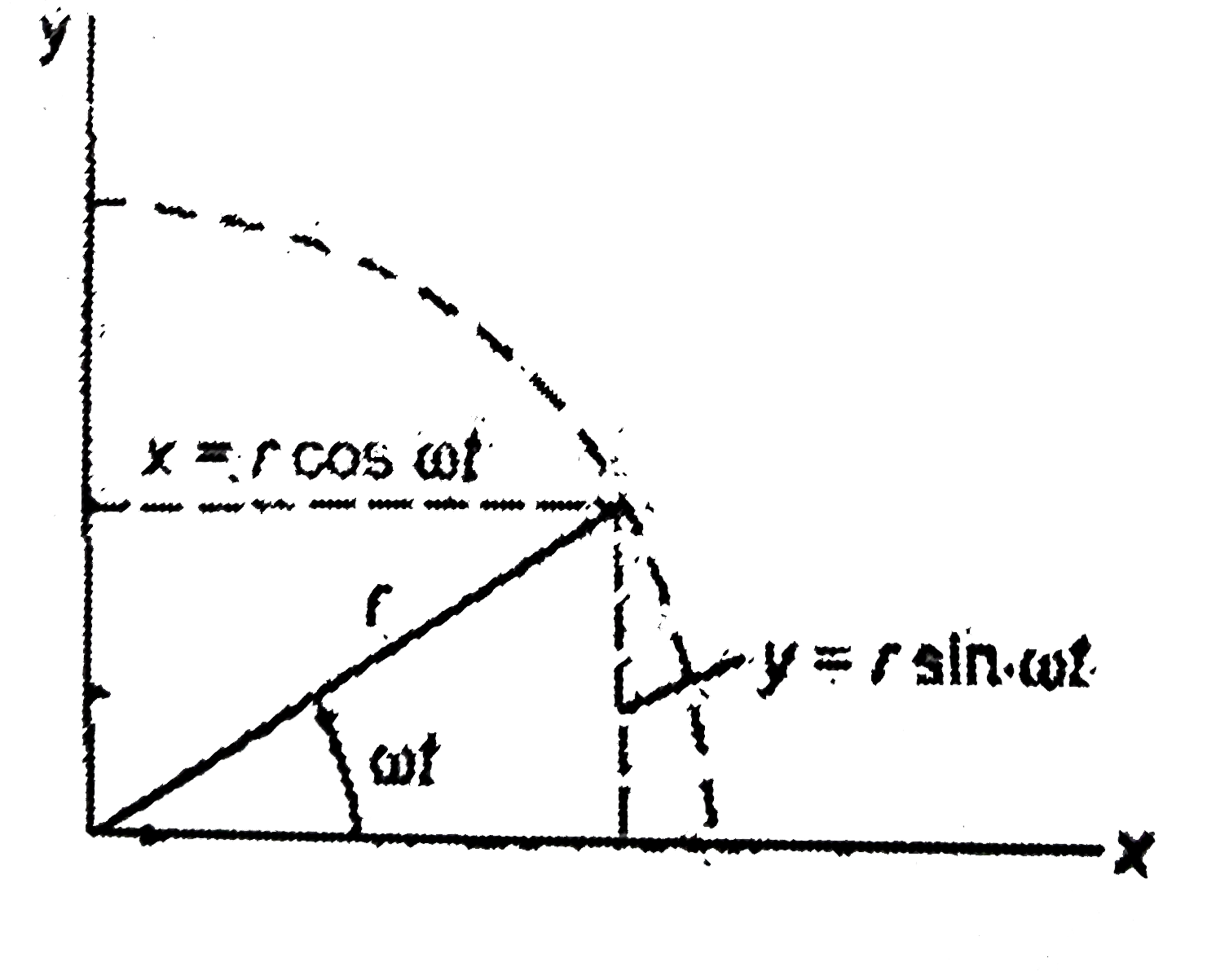The position vector of a particle moving in a plane is given by where are the unit vectors along the rectangular axes C and Y : a,b, and are constants and t is time. The acceleration of the particle is directed along the vector Solution in Telugu
The correct Answer is:C
Given, position vector,
On differentiating both sides w.r.t.t, we get
Velocity,
Again, on differentiating w.r.t.t, we get acceleration
From Eq. (i), we get
Hence, acceleration is along
Topper's Solved these Questions
Similar Questions
Assertion (A) When we bounce a ball on the ground, it comes to rest after a few bounces, losing all its energy. This is an example of violation of conservation of energy.
Reason (R) Energy can change from one form to another but the total energy is always conserved.
Which of the following is true?
View SolutionMatch the following fundamental forces of nature with their relative strength.
List-IList-II(A)Strong nuclear force(i)10−2(B)Weak nuclear force(ii)1(C)Elextromagnetic force(iii)10−39(D)Gravitational force(iv)10−13
The correct match is
View SolutionThe position vector of a particle is r=asinωtˆi+acosωtˆj
The velocity of the particle is
View SolutionThe displacement vector of a particle of mass m is given by r (t) = hati A cos omega t + hatj B sin omega t . (a) Show that the trajectory is an ellipse. (b) Show that F = -m omega^(2)r .
View Solutionˆi व् ˆj क्रमशः x- व् y- अक्षों के अनुदिश एकांक सदिश है सदिशों ˆi+ˆj तथा ˆi−ˆj का परिमाण तथा दिशा क्या होगा ? सदिश A=2ˆi+3ˆj के ˆi+ˆjव् ˆi−ˆj के दिशाओ के अनुदिश घातक निकालिये आप ग्राफ़िय विधि का उपयोग क्र सकता है
View Solutionत्रिज्या R के वृताकार मार्ग में एकसमान कोणीय वेग ω से गति कर रहे कण की स्थिति सदिश किसी क्षण t पर निम्नलिखित समीकरण द्वारा दिया जाता है :
→r=Rcosωtˆi+Rsinωtˆj
कण का किसी क्षण t पर वेग तथा त्वरण ज्ञात कीजिए ।
View SolutionA particle moves such that its momentum vector →p(t)=cosωtˆi+sinωtˆj where ω is a constant and t is time. Then which of the following statements is true for the velocity →v(t) and acceleration →a(t) of the particle :
View SolutionConsider a particle moving in the x−y plane according to r=r(cosωtˆi+sinωtˆj), where r and ω are constants. Find the trajectory, the velocity, and the acceleration.

View SolutionThe position vector of a particle is→r=(acosωt)ˆi+(asinωt)ˆj. the velocity of the particle is
View SolutionThe displacement vector of a particle of mass m is given by r (t) = ˆiAcosωt+ˆjBsinωt.
(a) Show that the trajectory is an ellipse.
(b) Show that F = −mω2r.
View SolutionA particle moves so that its position vector is given by vec r= cos omega t hat x = sin omega t haty , where omega is a constant. Which of the following is true?
View SolutionThe position vector of a particle is r = a sin omega t hati +a cos omega t hatj The velocity of the particle is
View SolutionA particle moves such that its momentum vector vecp(t) = cos omega t hati + sin omega t hatj where omega is a constant and t is time. Then which of the following statements is true for the velocity vec v(t) and acceleration veca (t) of the particle :
View SolutionThe displacement vector of a particle of mass m is given by r (t) = ˆiAcosωt+ˆjBsinωt.
(a) Show that the trajectory is an ellipse.
(b) Show that F = −mω2r.
View SolutionThe position vector of the particle is r(t)=acosωtˆi+asinωtˆj, where a and ω are real constants of suitable dimensions. The acceleration is
View Solution

